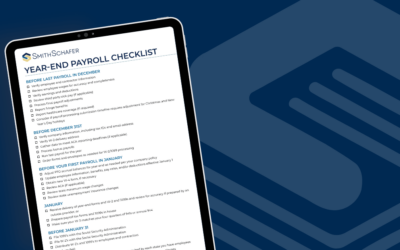As we approach another tax season, let’s take a moment to recognize a few popular ways to save money. This article will address some of the most common ways our transportation industry clients save money on their tax bill.

Transportation industry tax savings to remember
BELOW ARE 6 CRUCIAL TAX DEDUCTIONS TO THE TRANSPORTATION INDUSTRY:
1. Per Diem Methods for Substantiating Meals & Lodging Expenses
A transportation company owner must substantiate the amount, time, place, and business purpose of expenses paid or incurred while traveling away from home. The IRS has provided per diem allowances under which the amount of meals and incidental expenses (M&IE) may be deemed to be substantiated. The per diem allowances eliminate the need to verify actual costs. However, using the per diem allowances, the owner still needs to have adequate records for documenting time, place, and business purpose.
Three per diem allowance methods:
- Lodging plus M&IE – provides a per diem allowance to cover lodging, meals, and incidental expenses.
- M&IE only – provides a per diem allowance for meals and incidental expenses only.
- Incidental expenses only – used when no meal or lodging expenses are incurred.
Any reimbursement exceeding the relevant federal per diem rates for the type of allowance must be included in the employee’s (or independent contractor’s) gross income and be reported on the employee’s form W-2, subject to withholding.
A per diem allowance for M&IE may only be used to substantiate an employee’s or other payee’s M&IEs for purposes of the employer’s return. The amount deemed substantiated is equal to the lesser of the per diem allowance or the amount computed at the federal M&IE rate for the locality of travel for the period the employee is away from home. If M&IEs are substantiated using a per diem allowance, 60 percent of the payment is considered lodging, and 40 percent of the payment is considered food and beverage, subject to the 50 percent limitation on meals and entertainment
Current year per diem rates can be found here: https://www.gsa.gov/travel/plan-book/per-diem-rates
2. Accelerated Deprecation
Code Section 168(k) (bonus depreciation): with an asset life of 20 years or less, will qualify for 100 percent bonus depreciation.
Code Section 179: Owners may expense up to $1.05 million of new or used business assets. This limit is phased out once more than $2.62 million worth of assets are placed in service during the year. Code Section 179 expenses cannot exceed the taxable income of the business. Bonus depreciation does not have this stipulation. One caveat to getting around a taxable loss and taking section 179 expenses is enough officer compensation to offset the loss. Still, this item should be discussed with a tax professional.
Note: Based on the states an owner is filing in, the state may not conform to all or a portion of the above forms of accelerated depreciation.
3. Qualified Business Income Tax Deduction
The Tax Cuts and Jobs Act (TCJA) created a new deduction for pass-through business owners. It is called the Qualified Business Income Deduction, also known as Code Section 199A deduction or QBI deduction. According to the IRS, QBI is the combined amounts of qualified items of income, gain, deduction, and loss from any qualified trade or business. Only items included in taxable income are counted.
This deduction is eligible for a maximum of 20 percent tax deduction on qualified business income for eligible partnerships, S corporations, and sole proprietorships. For taxpayers with taxable income exceeding $329,800 (married filing joint) or $164,900 (all other taxpayers), the deduction is subject to limitations.
These limitations include:
- Whether the business is classified as a service trade or business
- Taxpayer’s taxable income
- The amount of W-2 Wages of the business
- Unadjusted basis immediately after acquisition (UBIA) of qualified property held by the trade or business
As of October 2021, the QBI deduction is set to expire in 2025.
4. Vehicle & Travel Tax Deductions
Automobile usage tax deductions are some of the most scrutinized deductions on business filings but may be worth it if you travel often for work. There are two ways to claim this deduction:
- Standard Mileage Rate. Total all the miles driven for your business and multiply by the IRS’s standard deduction rate to figure out your deduction. For the tax year 2021, the standard mileage rate is 56 cents per mile.
- Actual Car-related Expenses. This option may entail a little more work. If you keep very detailed records throughout the year, you can add up how much your car depreciated and what you spent on gas, repairs, tires, tune-ups, car insurance, and registration fees. That will be your deduction instead of the mileage.
The option you choose depends on how economical your car is, how much it cost you to drive it throughout the year and how well you document car-related expenses. More often than not, a taxpayer will take the standard mileage rate due to ease of use and, in some cases, may result in a higher deduction.
The most important part of taking this deduction is keeping a good record of receipts and mileage in case of an audit.
5. Home Office Tax Deduction
You may deduct expenses for the business use of your home, which include utilities, mortgage interest, insurance, repairs, and depreciation. Office supplies are also deductible such as printer ink, pens, software, a new laptop, and much more.
A taxpayer can either take the deduction as a percentage of your home office square footage divided by the total square footage and apply it to the actual expenses or use the simplified method approach. The simplified method approach allows business owners to deduct $5 for every square foot of your home office, up to a maximum of 300 square feet ($1,500).
A home office must be any area in the home strictly used for business work and must be a situation where no other office space is available for work.
6. New for MN Taxpayers in 2021: SALT Cap Workaround
Beginning in 2021, owners of pass-through entities (S Corporations and partnerships) can pay MN state income tax through their S Corporation or partnership and have the S corporation or partnership take the deduction. Owners will then receive credit when filing their MN tax returns.
Currently, individuals are limited to a maximum of a $10,000 deduction for state and local taxes on their individual returns, Schedule A. The SALT Cap Workaround allows the owners of pass-through entities to deduct the taxes paid to the state of MN instead of losing that deduction. Additionally, the deduction is not a part of itemized deductions but is an ordinary business expense.
Many other states have adopted similar provisions, including Wisconsin. The benefit to planning is not only for MN entities. Additionally, cash method taxpayers need to pay in the MN tax before year-end to receive the benefit of this deduction.
*Note that MN’s law is written such that this deduction only applies while there is a federal cap on the State and Local Tax Deduction.
Example:
- S Corporation has net income before tax of $100,000.
- S Corporation elects to pay MN passthrough tax of $9,850 (9.85%)
- S Corp federal taxable income reduced to $90,150
- Federal tax savings between $1,950 and $3,650 depending on the owner’s overall federal rate.
- Entity owners receive fully refundable credit on MN individual return of $9,850. Effectively making it a zero impact on the state return.
HERE ARE 4 TAX CREDITS IMPORTANT TO THE TRANSPORTATION INDUSTRY:
1. Work Opportunity Tax Credit (WOTC)
The WOTC is a Federal tax credit available to employers for hiring individuals from certain target groups who have historically faced barriers to employment and discrimination in the workplace. WOTC can reduce your federal tax liability by up to $9,600 per individual employed. The credit is nonrefundable.
To start, you must ask for and be issued a certification for each employee from the state workforce agency (SWA) within the state your transportation business is located. The certification proves the employee is a member of a targeted group. To do so, you must either:
- Receive the certificate by the day the individual begins work; or
- Complete IRS Form 8850, Pre-Screening Notice and Certification Request for the WOTC, on or before the individual’s start date and receive the certification before you claim the credit. This form is used to make a written request to the state workforce agency to certify an individual as a targeted group member.
Generally, employers have 28 days after an individual begins work to submit the proper paperwork with the designated local agency to qualify for the credit.Target groups are as follows:
- Designated Community Resident
- Ex-Felon
- Long-Term Family Assistance Recipient
- Summer Youth Employee
- Supplemental Nutrition Assistance Program Recipient
- Supplemental Security Income Recipient
- Qualified IV-A Recipient
- Qualified Long-Term Unemployment Recipient
- Qualified Veteran
- Note: Our transportation clients have had great success with hiring returning veterans who already know how to operate vehicles and heavy equipment from their experiences serving our country. The WOTC provides a greater incentive to hire these individuals.
- Vocational Rehabilitation Referral
2. Research & Development (R&D) Tax Credit
The R&D Tax Credit is an incentive for transportation businesses to invest in research and development activities to increase growth and competitiveness. Companies may be able to take credit up to 13 percent of eligible spending for new and improved products and processes.
Qualified research must meet the following four criteria:
- Qualified purpose – to develop new or improved products or processes resulting in increased performance, function, reliability, or quality.
- Technological in nature – relies on the principles of hard science, such as engineering.
- Development of a new or improved component – may include processes, software, techniques, formulas, or inventions.
- Substantially all constitute experimentation – testing and evaluation.
Eligible costs include employee wages, cost of supplies, cost of testing, contract research expenses, and costs associated with developing a patent.
Often there is confusion surrounding the R&D Tax Credit of who is eligible to receive the credit. Research and development can occur anywhere, not just in laboratories. The credit is available to those researching new ideas or improving existing ones to make a job, function, or process more efficient.
3. Fuel Tax Credits
One of the most used Federal tax credits in the transportation industry is the fuel tax credit. The credit is for fuel usage and not only for a registered highway vehicle (defined as “off-highway”). The credit also applies to non-propulsion motors such as auxiliary power units, pumps, and refrigeration units. Gasoline and diesel fuel used in school buses and qualified local buses also qualify.
Fuel tax credits can be claimed on Form 4136 with your company’s year-end corporate tax return, independent from the corporate tax return, or filed quarterly with Form 720. Fuel credits are retroactive and refundable. The credits are mainly utilized at the federal level, but some states also allow a credit.
For record-keeping purposes, you should keep the number of gallons used, the dates the fuel was purchased, the number of gallons used for each purpose, and the names and addresses of suppliers.
4. 2021 Employee Retention Credit
A federal payroll tax credit is available for businesses that were impacted by COVID-19. The credit is up to $7,000 per employee, per quarter for the first three quarters of 2021. A maximum credit of $21,000 per employee for 2021 is available for businesses that qualify. In order to qualify the business must have been impacted by COVID-19 in either of the following ways.
- The business was impacted by a governmental order that either completely or partially shut down their operations. Businesses that were subjected to capacity restrictions may qualify under certain circumstances. In Minnesota, many businesses were subject to capacity restrictions through May 28, 2021.
- The business saw a quarter-over-quarter drop in revenue in 2021 of 20% compared to the same quarter in 2019. Under this analysis, each quarter stands alone for comparison. Businesses that are not down 20% for the year may still qualify if the quarterly revenue is down. Additionally, businesses qualifying under this provision receive the credit until the END of the quarter that no longer qualifies. Meaning, if a business qualifies in 1st quarter, the business automatically qualifies for 2nd quarter.
This credit was also available in 2020, with slightly different rules. Businesses can still amend 2020 payroll tax returns if they qualify under the 2020 rules.
Businesses that received the second round PPP cannot use the exact same wages for both ERC and PPP, so it is important to run the analysis to maximize both of these provisions.
Read the Latest Update – Employee Retention Credit Ending
OTHER TAX ISSUES TO BE AWARE OF
Filing Form 1099s
You are not required to file Form 1099 for outside carriers, but you should file them for the owner-operators or any independent contractors you have under contract. Suppose you have contracts with outside carriers that could be perceived as owner-operators mainly working or exclusively with you. In that case, you should consult with your tax advisor if filing Form 1099 is necessary. By doing so, it also helps document drivers as independent contractors.
Federal Excise Tax (FET)
Confusion abounds for transportation companies on the taxability of glider kits and the applicability of FET. The IRS has reclassified converter dollies and changed their taxability. FET is complex and constantly changing. If glider kits or converter dollies are a regular part of your operations, you should consult with a tax professional or the appropriate agencies to make sure you are compliant.
Apportionment & Nexus
Specific apportionment rules for trucking and brokerage activities often draw confusion or are incorrectly applied. If your transportation company is not correctly using apportionment rules, there may be a nexus or reporting requirements in other states or jurisdictions where you are not currently filing. There is no statute of limitations for not filing in a state, leading to significant penalties and interest. Many states now offer voluntary disclosure agreements that allow your transportation company to begin filing in the appropriate states while limiting cost and exposure.
Note: State tax laws may differ from the related Federal tax laws described above.
QUESTIONS?
Since there have been significant changes over the past year, it is crucial to work with a qualified advisor to help you leverage these tax opportunities. Smith Schafer has been a recognized leader in providing tax, accounting, auditing, and consulting services to the transportation industry since 1971. Our Transportation Group is committed to serving over
110 Minnesota transportation entities and stays on top of industry issues, trends, tools, and technologies to ensure we give you the best possible advice. For additional information, contact us. We look forward to speaking with you soon.



